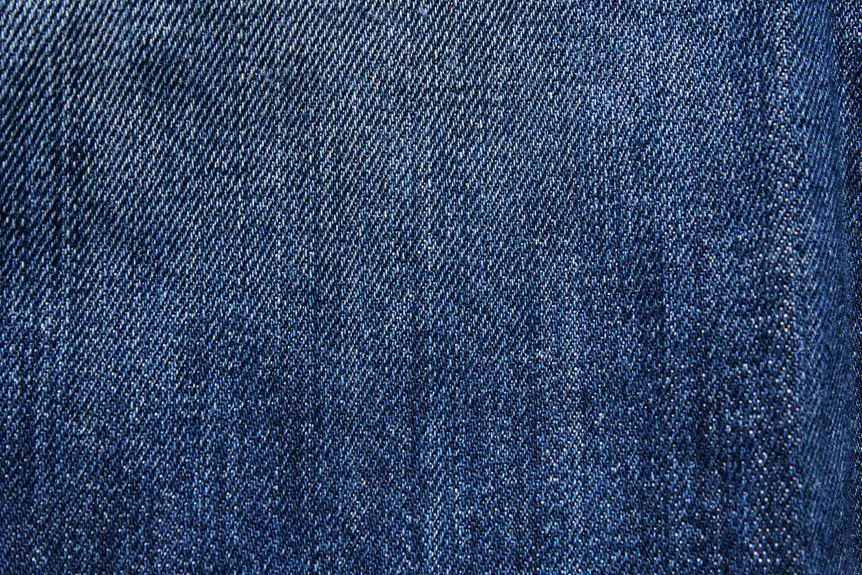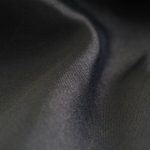Gore-Tex fabric is made from a microporous material called ePTFE, which keeps you dry by blocking rain while letting sweat vapor escape. Its tiny pores are too small for water droplets but large enough for moisture to get out, so you stay comfortable. You’ll find Gore-Tex in jackets, shoes, and outdoor gear because it balances waterproof protection with breathability. If you want to understand its types, uses, and care tips, there’s more to explore.
Table of Contents
Key Takeaways
- Gore-Tex fabric is made from expanded polytetrafluoroethylene (ePTFE) with tiny pores blocking water but allowing sweat vapor to pass.
- Its microporous structure keeps rain out while letting moisture escape, ensuring waterproofness and breathability.
- Gore-Tex is lightweight, durable, and resistant to tears and abrasions, making it ideal for outdoor apparel.
- Different Gore-Tex types balance waterproofing and breathability for activities from intense sports to casual travel.
- Proper care involves washing with gentle detergent and reapplying DWR treatment to maintain waterproof performance.
What Is Gore-Tex Made Of?
Gore-Tex is made from a unique membrane composed primarily of expanded polytetrafluoroethylene (ePTFE). This material is stretched to create a microporous structure, filled with billions of tiny pores.
Each pore is about 20,000 times smaller than a water droplet but 700 times larger than a water vapor molecule. You’ll find this membrane sandwiched between layers of fabric to create a durable, flexible material.
The ePTFE membrane’s toughness and breathability come from this microscopic design, which balances protection and comfort. When you wear Gore-Tex, you’re relying on this innovative composite that’s lightweight yet resistant to tears and abrasions.
This combination makes Gore-Tex suitable for everything from outdoor jackets to footwear, giving you reliable performance in varying conditions.
How Does Gore-Tex Keep You Dry?
How exactly does this fabric keep water out while letting sweat escape?
Gore-Tex uses a special membrane with tiny pores that are smaller than water droplets but larger than water vapor molecules. When rain hits the fabric, those pores block the liquid water from passing through, so you stay dry.
At the same time, sweat produced by your body turns into vapor, which is small enough to pass through these pores and escape. This means moisture from inside your clothing won’t build up, keeping you comfortable.
The membrane is also bonded between layers of fabric, adding durability and protection without sacrificing its waterproof and breathable qualities.
The Science Behind Breathability
You’re about to learn how Gore-Tex’s microporous membrane lets moisture escape while blocking water.
This unique structure enables moisture vapor transmission without sacrificing waterproofness.
Understanding this air permeability mechanism will show you why Gore-Tex keeps you comfortable in changing conditions.
Microporous Membrane Structure
The secret to breathability lies in a microporous membrane made up of billions of tiny pores. These pores are small enough to block water droplets but large enough to let water vapor escape, keeping you dry and comfortable. When you wear Gore-Tex, this membrane acts as a barrier against rain while allowing sweat to evaporate.
| Feature | Description |
|---|---|
| Pore Size | About 0.2 microns in diameter |
| Water Resistance | Pores repel liquid water |
| Breathability | Allows water vapor to pass through |
Moisture Vapor Transmission
Although it might seem simple, moisture vapor transmission plays an essential role in keeping you comfortable when wearing Gore-Tex. This process allows sweat vapor to escape while blocking liquid water from entering.
Here’s how it works:
- Your body produces moisture vapor as you move and heat up.
- Gore-Tex’s microporous membrane lets the vapor pass through its tiny pores.
- The vapor escapes to the outside, preventing dampness inside your clothing.
This balance keeps you dry and comfortable during physical activities by managing internal moisture without letting rain or snow in.
Air Permeability Mechanism
When you wear Gore-Tex, air permeability plays an essential role in maintaining comfort by allowing your skin to breathe. This fabric’s microscopic pores are small enough to block water droplets but large enough to let air molecules pass through.
As a result, fresh air circulates around your skin, reducing heat buildup and moisture accumulation. This balance prevents that sticky, clammy feeling you get in less breathable materials.
The air permeability mechanism works hand-in-hand with moisture vapor transmission to keep you dry both inside and out. So, when you’re active outdoors, Gore-Tex helps regulate your body temperature by allowing airflow without compromising waterproof protection.
This smart design guarantees you stay comfortable, no matter the weather conditions.
Different Types of Gore-Tex Fabrics
Since you want gear that matches your specific needs, understanding the different types of Gore-Tex fabrics is crucial.
Gore-Tex offers variations tailored for diverse activities and conditions. Here are three main types to know:
- Gore-Tex Pro – Designed for extreme durability and maximum breathability, ideal for intense outdoor adventures.
- Gore-Tex Active – Lightweight and highly breathable, perfect for high-output activities where weight and ventilation matter most.
- Gore-Tex Paclite – Compact and packable with reliable waterproof protection, great for travel and occasional use.
Each type balances waterproofing, breathability, and weight differently, so picking the right Gore-Tex fabric helps you stay comfortable and protected no matter your activity.
Understanding these distinctions guarantees you get gear that performs exactly how you need it to.
Common Uses for Gore-Tex Material
You’ll find Gore-Tex in a wide range of outdoor apparel designed to keep you dry and comfortable.
It’s also a popular choice for footwear and accessories that need to withstand tough weather.
Let’s explore how this material enhances your gear in various conditions.
Outdoor Apparel Applications
Gore-Tex fabric finds its way into countless outdoor apparel pieces designed to keep you dry and comfortable in challenging conditions.
When you’re gearing up for your next adventure, Gore-Tex is probably part of your jacket, pants, or gloves. Its waterproof and breathable qualities make it ideal for:
- Rain Jackets – You stay dry without overheating during sudden downpours or drizzle.
- Ski and Snowboard Pants – Gore-Tex blocks wet snow while letting sweat escape, keeping you warm and dry.
- Hiking Gear – Whether climbing mountains or trekking through forests, Gore-Tex protects you from wind, rain, and mud without sacrificing breathability.
Using Gore-Tex apparel means you can focus on your adventure without worrying about the weather slowing you down.
Footwear and Accessories
When you choose footwear and accessories made with this fabric, you get reliable protection against moisture without sacrificing comfort.
Gore-Tex keeps your feet dry during rainy hikes or snowy walks by blocking water while allowing sweat to escape. This breathability prevents overheating and blisters, so you stay comfortable all day.
You’ll find Gore-Tex in hiking boots, running shoes, and casual footwear, as well as gloves and hats designed for wet conditions. Accessories made with this fabric help maintain dryness without limiting movement or style.
Whether you’re trekking through muddy trails or steering through city streets on a rainy day, Gore-Tex footwear and accessories offer durable, lightweight protection that adapts to your active lifestyle.
This fabric guarantees you stay dry and comfortable wherever you go.
Benefits of Wearing Gore-Tex Gear
Although outdoor conditions can be unpredictable, wearing Gore-Tex gear keeps you dry and comfortable by blocking water while allowing sweat to escape. This unique balance means you stay warm without feeling clammy or wet inside your clothing.
When you choose Gore-Tex, you benefit from:
- Waterproof Protection – You’ll stay dry even in heavy rain or snow, which prevents chills and discomfort.
- Breathability – Your sweat escapes, reducing overheating during intense activities like hiking or skiing.
- Durability – Gore-Tex gear stands up to rugged environments, ensuring long-lasting performance.
With these advantages, Gore-Tex gear lets you confidently tackle the outdoors, no matter the weather, while maintaining comfort and focus on your adventure.
How to Care for Your Gore-Tex Clothing
To keep your gear performing at its best through countless adventures, proper care makes all the difference.
Start by washing your Gore-Tex clothing regularly with a gentle detergent designed for technical fabrics—avoid fabric softeners and bleach, as they damage the membrane. Use a front-loading washing machine on a warm, gentle cycle.
After washing, rinse thoroughly to remove all detergent residue. Tumble dry on low heat or use a warm iron with no steam; this action helps reactivate the durable water repellent (DWR) coating.
If water no longer beads on the surface, consider applying a spray-on or wash-in DWR treatment.
Store your gear in a cool, dry place away from direct sunlight. Following these simple steps guarantees your Gore-Tex remains waterproof, breathable, and ready for your next adventure.
Comparing Gore-Tex to Other Waterproof Fabrics
If you want reliable protection from the elements, understanding how Gore-Tex stacks up against other waterproof fabrics is essential.
Gore-Tex offers a unique membrane that balances waterproofing with breathability, making it ideal for active use. Here’s how it compares:
Gore-Tex combines superior waterproofing with breathability, perfect for staying comfortable during active outdoor adventures.
- Gore-Tex vs. Nylon: Nylon on its own isn’t waterproof, but when coated, it provides water resistance. Gore-Tex, however, guarantees full waterproofing and breathability, preventing moisture buildup inside.
- Gore-Tex vs. PVC: PVC is fully waterproof but lacks breathability, causing sweat to accumulate. Gore-Tex’s microporous membrane lets sweat escape, keeping you dry from both rain and perspiration.
- Gore-Tex vs. Polyurethane: Polyurethane coatings are waterproof but less durable and less breathable than Gore-Tex, which maintains performance over time.
Choosing Gore-Tex means you get durable, breathable, and truly waterproof protection.
Frequently Asked Questions
Can Gore-Tex Fabric Be Recycled or Is It Environmentally Friendly?
You can recycle some Gore-Tex products, but it’s limited and tricky. While Gore-Tex improves durability and reduces waste, it’s not fully environmentally friendly. You should consider sustainable options and proper disposal to minimize impact.
How Long Does Gore-Tex Fabric Typically Last With Regular Use?
Think of Gore-Tex as a loyal shield, enduring storms with you. With regular use, it typically lasts 3 to 5 years, but your care and conditions can stretch its protective spirit even longer.
Is Gore-Tex Fabric Safe for People With Sensitive Skin or Allergies?
You can usually wear Gore-Tex safely if you have sensitive skin or allergies since it’s breathable and hypoallergenic. However, check the specific garment’s lining and treatments, as some additives might cause irritation for certain individuals.
Can Gore-Tex Clothing Be Repaired if It Gets Torn or Damaged?
You can repair Gore-Tex clothing if it gets torn or damaged. Using specialized patches or professional services helps maintain waterproofing and breathability, keeping your gear functional and extending its lifespan even after damage.
Does Gore-Tex Fabric Perform Well in Extreme Cold or Hot Temperatures?
Imagine hiking in Alaska’s freezing cold; Gore-Tex keeps you dry and warm by blocking moisture while letting sweat escape. You’ll find it performs well in extreme cold and hot temperatures, maintaining comfort and protection throughout.
- Does Chiffon Fabric Stink - July 15, 2025
- Does Chiffon Fabric Affect the Economy - July 15, 2025
- Does Cotton Fabric Have a Nap - July 15, 2025







